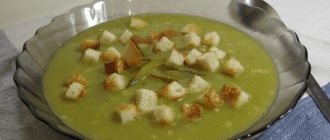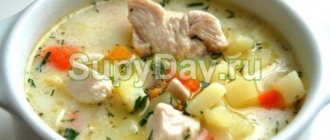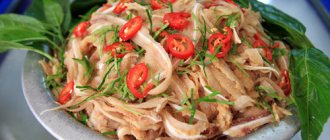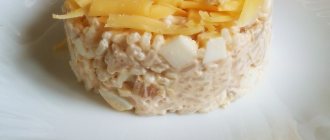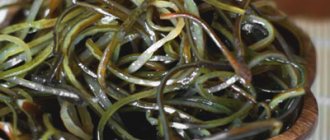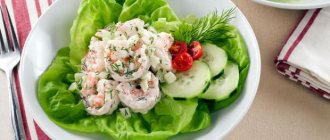Scientists have not yet come to a consensus about where the real homeland of sesame is located - in India or Africa? The use of sesame oil in Ayurveda, because sesame appears in many Indian recipes, and the Indian sesame trade suggests that sesame and sesame oil originate in India. On the contrary, wild sesame still grows in African lands.
Since ancient times, Thais, Koreans, Japanese, Indians and Chinese have used sesame oil as a traditional element of national cuisine. The ancient inhabitants of Babylon and Assyria added sesame seeds to pies, in Egypt they prepared sesame flour, in Rome they made a spicy paste from sesame seeds and cumin.
Nowadays, sesame is a popular seasoning for baking, as well as a key element in salads, vegetable dishes and sauces. Is it possible to fry in sesame oil? What does it taste like, what does the sesame seed product go with, and can it be replaced with other vegetable oil? The answers to these questions are below in the article.
Useful properties of sesame
The beneficial properties of sesame are difficult to overestimate.
It is rightly classified as a product that prolongs life and helps cure ailments:
- high protein content promotes growth and restoration of damaged tissues;
- calcium strengthens bones, teeth and hair, prevents osteoporosis;
- polyunsaturated acids help normalize cholesterol, clean blood vessels, regulate the cardiovascular system;
- fiber helps regulate the functions of the gastrointestinal tract;
- sesame oil removes toxins from the body and regulates stool;
- the oil is indicated for gastrointestinal ulcers and problems with the circulatory system, it is used for pneumonia and otitis media;
- sesame seeds prevent cancer, are especially useful for women during menopause;
- Sesame decoctions and oil are widely used in cosmetology to maintain the beauty of skin and hair, etc.
Beneficial properties of sesame oil
- Sesame oil is a wonderful natural antioxidant. Due to the high content of vitamins A, E and C, the oil has a beneficial effect on the functioning of the cardiovascular system (the heart muscle is nourished and strengthened, cholesterol levels are reduced, vascular elasticity is increased, and blood pressure is normalized). Due to these qualities, sesame oil is recommended to be included in the diet for hypertension, atherosclerosis, coronary heart disease, tachycardia, stroke, and heart attack.
- Sesame oil has the ability to neutralize the increased acidity of gastric juice and can relieve intestinal colic , and also helps eliminate erosions and ulcers on the mucous membrane of the gastrointestinal tract. In addition, sesame oil has anti-inflammatory, bactericidal, laxative and anthelmintic properties. Therefore, this oil can be used for the treatment and prevention of gastritis with high acidity, peptic ulcers, colitis and enterocolitis, constipation, pancreatic diseases, and helminthiasis.
- Sesame oil stimulates the formation and secretion of bile and helps restore the structure of the liver . Therefore, sesame oil is recommended for use for diseases of the gallbladder, hepatitis, and fatty liver.
- It is very useful to use sesame oil for various lung diseases - shortness of breath, pneumonia, dry cough, asthma.
- The presence of phospholipids and phytosterols causes a beneficial effect on the functioning of the brain, nervous and reproductive systems. Sesame oil can normalize the psycho-emotional and physiological state of women during menopause or the premenstrual period.
- The high calcium content in sesame oil helps strengthen bone tissue , making this oil especially useful for older people, children and pregnant women.
- Consumption of oil improves the functions of the visual apparatus and has a positive effect on the condition and appearance of hair, skin and nails.
- Sesame oil can normalize lipid metabolism and blood sugar balance , has an immunostimulating effect, reduces the risk of cancer, and neutralizes the negative effects on the body of various harmful formations, such as toxins, radionuclides, carcinogens, and waste products.
I have given you a far from complete list of all the beneficial properties of sesame oil. But I think you have already understood that daily regular use of this oil is a good prevention of many diseases. Oil can be used for more than just salad dressings. You can use it to prepare other culinary dishes. Or you can use it in its pure form.
Adults are recommended to consume sesame oil 1 teaspoon 2-3 times a day with meals, or 1 tablespoon per day.
Sesame oil can also be given to small children :
- at the age of 1 to 3 years, 3-5 drops of oil daily;
- at the age of 3 to 6 years - 5-10 drops;
- aged 6 to 10 years - ¾ teaspoon per day;
- aged 10 to 14 years - 1 teaspoon daily.
Sesame oil has no special contraindications, with the exception of individual intolerance. And you shouldn’t get carried away with it if you have increased blood clotting.
Sesame oil can be stored for a long time. Only if you have already opened the bottle, then put it in the refrigerator. Within 2 years, your oil will not deteriorate, will not lose its beneficial properties and will not go rancid.
Well, that's all I wanted to talk about today. After everything you've read, wouldn't you want to try a vegetable salad with sesame oil? I hope you want to. You can try dressing other salads with it, which you usually season with sunflower or olive oil. You will feel a slightly different taste of an already familiar dish.
Please share this information with your friends on social networks. Buttons below.
And I would really like to hear from you, did you know about the benefits of sesame oil before, and did you try it? And even more interesting, have you made salads with sesame oil? I'm really looking forward to your comments!
I also want to share with you a joyful event. Today the results of the competition “Olive is my love!” were summed up, in which I took part with my article Making decorations from olives for dishes>>.
I became the winner in this competition and heard many flattering words addressed to me both from the jury and from the participants! Thanks to everyone who cheered for me!
And who hasn’t seen this article yet - read it, take a look! In it I teach you how to make very simple but effective decorations for dishes made from olives and black olives.
You can always find many other useful materials for the whole family by going to the site map.
And I don’t say goodbye to you for a long time,
Your Ksenia Druzhkova
Energy value of sesame
Sesame is incredibly high in calories. 100 grams of seeds contain:
- 565 kcal;
- fat - 48.7 grams;
- carbohydrates - 12.2 grams;
- proteins - 19.4 grams;
- water - 9 grams;
- ash - 5.1 grams;
- B vitamins (B1, B2) - 1.7 mg;
- vitamin PP - 4.0 mg;
- calcium - 1474.5 mg;
- potassium - 498 mg;
- iron - 61 mg;
- phosphorus - 720 mg;
- magnesium - 540 mg;
- sodium - 75 mg.
The calorie content of one teaspoon of sesame seeds is 39.32 kcal. When using sesame in cooking, you should remember not only its beneficial properties and taste, but also the high calorie content of the product.
Recipe Salad with sesame oil. Calorie, chemical composition and nutritional value.
Nutritional value and chemical composition of “Salad with sesame oil.”
The table shows the nutritional content (calories, proteins, fats, carbohydrates, vitamins and minerals) per 100 grams of edible portion.
| Nutrient | Quantity | Norm** | % of the norm in 100 g | % of the norm in 100 kcal | 100% normal |
| Calorie content | 44.7 kcal | 1684 kcal | 2.7% | 6% | 3767 g |
| Squirrels | 0.9 g | 76 g | 1.2% | 2.7% | 8444 g |
| Fats | 2.9 g | 56 g | 5.2% | 11.6% | 1931 |
| Carbohydrates | 3.4 g | 219 g | 1.6% | 3.6% | 6441 g |
| Organic acids | 0.4 g | ~ | |||
| Alimentary fiber | 1.2 g | 20 g | 6% | 13.4% | 1667 g |
| Water | 90.3 g | 2273 g | 4% | 8.9% | 2517 g |
| Ash | 0.8879 g | ~ | |||
| Vitamins | |||||
| Vitamin A, RE | 68.5 mcg | 900 mcg | 7.6% | 17% | 1314 g |
| beta carotene | 0.412 mg | 5 mg | 8.2% | 18.3% | 1214 g |
| Vitamin B1, thiamine | 0.044 mg | 1.5 mg | 2.9% | 6.5% | 3409 g |
| Vitamin B2, riboflavin | 0.037 mg | 1.8 mg | 2.1% | 4.7% | 4865 g |
| Vitamin B4, choline | 5.19 mg | 500 mg | 1% | 2.2% | 9634 g |
| Vitamin B5, pantothenic | 0.225 mg | 5 mg | 4.5% | 10.1% | 2222 g |
| Vitamin B6, pyridoxine | 0.079 mg | 2 mg | 4% | 8.9% | 2532 g |
| Vitamin B9, folates | 8.885 mcg | 400 mcg | 2.2% | 4.9% | 4502 g |
| Vitamin C, ascorbic acid | 17.77 mg | 90 mg | 19.7% | 44.1% | 506 g |
| Vitamin E, alpha tocopherol, TE | 0.61 mg | 15 mg | 4.1% | 9.2% | 2459 g |
| Vitamin H, biotin | 0.937 mcg | 50 mcg | 1.9% | 4.3% | 5336 g |
| Vitamin K, phylloquinone | 9.1 mcg | 120 mcg | 7.6% | 17% | 1319 g |
| Vitamin RR, NE | 0.5493 mg | 20 mg | 2.7% | 6% | 3641 g |
| Niacin | 0.404 mg | ~ | |||
| Macronutrients | |||||
| Potassium, K | 224.58 mg | 2500 mg | 9% | 20.1% | 1113 g |
| Calcium, Ca | 17.83 mg | 1000 mg | 1.8% | 4% | 5609 g |
| Magnesium, Mg | 15.74 mg | 400 mg | 3.9% | 8.7% | 2541 g |
| Sodium, Na | 129.43 mg | 1300 mg | 10% | 22.4% | 1004 g |
| Sera, S | 6.4 mg | 1000 mg | 0.6% | 1.3% | 15625 g |
| Phosphorus, P | 28.4 mg | 800 mg | 3.6% | 8.1% | 2817 g |
| Chlorine, Cl | 228.56 mg | 2300 mg | 9.9% | 22.1% | 1006 g |
| Microelements | |||||
| Aluminium, Al | 137.3 mcg | ~ | |||
| Bor, B | 55.7 mcg | ~ | |||
| Iron, Fe | 0.704 mg | 18 mg | 3.9% | 8.7% | 2557 g |
| Yod, I | 1.94 mcg | 150 mcg | 1.3% | 2.9% | 7732 g |
| Cobalt, Co | 3.279 mcg | 10 mcg | 32.8% | 73.4% | 305 g |
| Manganese, Mn | 0.1268 mg | 2 mg | 6.3% | 14.1% | 1577 g |
| Copper, Cu | 86.5 mcg | 1000 mcg | 8.7% | 19.5% | 1156 g |
| Molybdenum, Mo | 4.071 mcg | 70 mcg | 5.8% | 13% | 1719 g |
| Nickel, Ni | 6.3 mcg | ~ | |||
| Rubidium, Rb | 74.2 mcg | ~ | |||
| Selenium, Se | 0.291 mcg | 55 mcg | 0.5% | 1.1% | 18900 g |
| Fluorine, F | 15.19 mcg | 4000 mcg | 0.4% | 0.9% | 26333 g |
| Chromium, Cr | 4.36 mcg | 50 mcg | 8.7% | 19.5% | 1147 g |
| Zinc, Zn | 0.17 mg | 12 mg | 1.4% | 3.1% | 7059 g |
| Digestible carbohydrates | |||||
| Starch and dextrins | 0.178 g | ~ | |||
| Mono- and disaccharides (sugars) | 3.2 g | max 100 g | |||
| Glucose (dextrose) | 1.1955 | ~ | |||
| Sucrose | 0.3716 g | ~ | |||
| Fructose | 0.937 g | ~ | |||
| Essential amino acids | 0.1405 g | ~ | |||
| Arginine* | 0.0257 g | ~ | |||
| Valin | 0.0204 g | ~ | |||
| Histidine* | 0.011 g | ~ | |||
| Isoleucine | 0.0194 g | ~ | |||
| Leucine | 0.0271 g | ~ | |||
| Lysine | 0.0278 g | ~ | |||
| Methionine | 0.0053 g | ~ | |||
| Methionine + Cysteine | 0.0081 g | ~ | |||
| Threonine | 0.0208 g | ~ | |||
| Tryptophan | 0.0055 g | ~ | |||
| Phenylalanine | 0.0176 g | ~ | |||
| Phenylalanine+Tyrosine | 0.0372 g | ~ | |||
| Nonessential amino acids | 0.5149 g | ~ | |||
| Alanin | 0.0215 g | ~ | |||
| Aspartic acid | 0.084 g | ~ | |||
| Glycine | 0.0187 g | ~ | |||
| Glutamic acid | 0.2943 g | ~ | |||
| Proline | 0.0147 g | ~ | |||
| Serin | 0.0213 g | ~ | |||
| Tyrosine | 0.0189 g | ~ | |||
| Cysteine | 0.0047 g | ~ | |||
| Sterols (sterols) | |||||
| beta sitosterol | 10.9855 mg | ~ | |||
| Saturated fatty acids | |||||
| Saturated fatty acids | 0.4 g | max 18.7 g | |||
| 16:0 Palmitinaya | 0.2444 g | ~ | |||
| 18:0 Stearic | 0.1346 g | ~ | |||
| 20:0 Arakhinovaya | 0.0082 g | ~ | |||
| Monounsaturated fatty acids | 1.104 g | min 16.8 g | 6.6% | 14.8% | |
| 16:1 Palmitoleic | 0.0055 g | ~ | |||
| 18:1 Oleic (omega-9) | 1.0958 g | ~ | |||
| Polyunsaturated fatty acids | 1.1068 g | from 11.2 to 20.6 g | 9.9% | 22.1% | |
| 18:2 Linolevaya | 1.1068 g | ~ |
The energy value of Salad with sesame oil is 44.7 kcal.
Primary Source: Created in the application by the user. Read more.
** This table shows the average levels of vitamins and minerals for an adult. If you want to know the norms taking into account your gender, age and other factors, then use the “My Healthy Diet” application.
Sesame and cooking
Sesame is readily used by chefs as a seasoning for various dishes. It is used as a filling in sweets, for sprinkling baked goods, and halva and kozinaki are made from sweet sesame paste. Sesame is added to breading for frying meat, portioned fish and chicken dishes. It is used in oriental cuisine to make sushi and rolls.
Sesame oil is made from the seeds, which is used not only in cooking, but also in cosmetology and medicine.
Sesame goes well with vegetables and rice dishes; salads with sesame are popular all over the world.
Salads with sesame seeds, the recipes for which will be offered below, are easy to prepare, healthy and diversify your daily diet well.
How to use sesame oil in food?
Sesame seeds, especially lightly toasted in a frying pan, are often used in cooking to decorate various dishes, giving them piquancy and originality.
Fragrant unrefined sesame oil is an indispensable attribute of Asian cuisine. A product made from sesame grains is often used in their dishes by chefs from Korea, Japan, India, Thailand, and China: it gives the dish a unique aroma and a subtle nutty flavor. It goes well with dishes of stewed vegetables, fish, rice, and is also used as an additional ingredient in salads, marinades, dressings and sauces.
In exotic Asian cuisine, and Asians, for a moment, are considered the longest-living people, they cook pilaf and sweets, deep-fried seafood in sesame oil, marinate vegetables, meat, chicken and fish in it.
Yes, and flavored with a couple of drops of sesame oil, dishes of Russian and Ukrainian cuisine (porridge, soups, hot meat and fish dishes, side dishes of cereals, vegetable purees, gravies, pastries, pancakes and pancakes) will acquire a new, original taste.
By the way!
Those people who may find the taste of an unrefined product made from cold-pressed sesame grains to be too rich, can be advised to mix it with peanut oil, which is milder in taste and aroma.
An oil product made from sesame seeds is quite often used for pickling vegetables and meat, as well as for preparing savory snacks and savory sauces, mainly from the menu of Indian chefs.
The calorie content of sesame oil is almost 890 kcal per 100 g, that is, the product has high nutritional value and contains a large amount of vegetable proteins and easily digestible fats. All this allows you to use the oily liquid as a component of dietary and vegetarian menus, but you should not abuse it. One tablespoon of sesame extract for salad dressing will be enough.
Simple recipes with sesame oil
- Salad with prunes: beets and beans (300 g each) + prunes (100 g). Boil beets and beans, cut beets into strips, prunes into pieces. Mix, salt and season with sesame seeds (1 teaspoon), sprinkle with herbs.
- Korean dessert: walnuts or hazelnuts (250 g) + powdered sugar and sesame extract (2 tablespoons each). Scald the nuts with boiling water and peel them. Fry lightly in oil, cool and allow excess fat to drain off. Roll in powdered sugar and place the dessert in a beautiful vase.
- Vegetable salad: Chinese cabbage + cucumber + bell pepper + celery stalk + sesame oil + salt + herbs to taste. Chop all the vegetables as desired, add salt, add herbs and pour over the dressing. Stir.
There are a huge number of healthy and tasty culinary recipes with sesame oil, but during the cooking process it is worth considering a couple of nuances:
- To preserve the taste and aroma of sesame oil, it must be added to the finished dish at the end of its preparation.
- To ensure that the taste and smell of the oil product does not seem too rich and bright, and does not interrupt the aromatic bouquet inherent in the other components of the dish, it can be mixed with any other vegetable oil to taste.
Salad “Cucumbers with sesame seeds”
A salad with cucumbers sprinkled with sesame seeds is healthy and requires a minimum of ingredients. There are many options for preparing cucumber dressing. One of the options for salad with sesame seeds, the photo of which is presented below, requires the following products:
- fresh cucumbers - 3 or 4 pieces;
- sesame seeds - 1 tablespoon (or to taste);
- table salt - to taste;
- granulated sugar - 1 tablespoon (can be replaced with honey);
- sunflower oil - 1 teaspoon;
- soy sauce - 0.5 teaspoon;
- Rice vinegar - 2 tablespoons.
Wash the cucumbers thoroughly, cut into thin slices, put in a container, and add salt.
Mix rice vinegar, oil, granulated sugar (or honey) and soy sauce in a separate bowl. Mix everything well.
Fry sesame seeds in a dry frying pan until golden brown.
Lightly squeeze the chopped cucumbers, place in a salad bowl, season with the prepared mixture and sprinkle with sesame seeds. Delicious salad is ready to serve.
Salad “Chicken breast with vegetables and sesame seeds”
It is easy to prepare a dietary salad from chicken breast with vegetables seasoned with sesame seeds, which can be used as an independent dish for dinner or lunch.
Required:
- fresh cucumbers - 3 pieces;
- chicken breast (fillet) - 400 grams;
- sesame seeds - 4 tablespoons (or to taste);
- bell pepper (sweet) - 2 pieces;
- soy sauce - 1/2 cup;
- lemon (juice) - 1 piece;
- greens (parsley, dill, lettuce) - to taste;
- sunflower oil - 3 tablespoons;
- black pepper (bitter) - to taste;
- garlic - to taste.
Boil the chicken breast, cool and cut into thin strips.
Mix soy sauce with lemon juice. Place the chopped breast in a container, pour in the mixture of sauce and lemon, and leave to marinate for about forty minutes.
Fry sesame seeds in a dry frying pan until golden brown.
Wash the peppers and cucumbers thoroughly, peel and cut into strips.
Wash the parsley and dill and chop finely.
In a separate container, mix oil, hot pepper and finely chopped garlic.
Place marinated chicken, prepared vegetables, sesame seeds and herbs in a salad bowl.
Season the mixture with oil and spices.
Mix everything well.
Place pre-washed green salad leaves on a dish, and beautifully place the prepared mixture with chicken and vegetables on them. Sprinkle with sesame seeds and herbs.
Salad ready.
Salad “Tuna with sesame and vegetables”
For fish lovers, we offer a simple and healthy fish salad with vegetables and sesame seeds.
Required Products:
- canned tuna in oil - 1 can (300 grams);
- fresh cucumber - 1 or 2 pieces;
- fresh tomatoes - 2 pieces;
- bell pepper (sweet) - 1 piece;
- salad - one bunch;
- sesame - 3 tablespoons;
- sunflower oil - to taste;
- garlic - to taste;
- table salt - to taste;
- ground black pepper - to taste;
- lemon - 1 piece.
Remove the fish from the jar and chop.
Wash tomatoes, peppers, cucumbers thoroughly and cut into cubes.
Wash the salad and tear the leaves into pieces.
Chop the garlic and mix with oil.
Place fish, chopped vegetables, and salad in a salad bowl. Mix everything, add oil and garlic, salt and pepper, season with lemon juice, sprinkle with sesame seeds.
Mix carefully again. The salad is ready to serve.
